
Greater Queens Podiatry, PLLC
 (718) 229-0222
(718) 229-0222
 (718) 229-0222
(718) 229-0222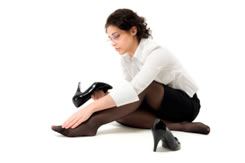 According to the Valley News team, it is very important to consider what you put on your feet during the winter months. Dr. Richard Arness states. “The type of shoe you wear is very important because that provides that friction between the bottom of your foot and the ground.” While there are many shoes out there are very stylish and cute for the winter, they may not protect you against winter injury. A good grip is essential to preventing potential injury.
According to the Valley News team, it is very important to consider what you put on your feet during the winter months. Dr. Richard Arness states. “The type of shoe you wear is very important because that provides that friction between the bottom of your foot and the ground.” While there are many shoes out there are very stylish and cute for the winter, they may not protect you against winter injury. A good grip is essential to preventing potential injury.
Finding a proper fitting shoe is important in reducing injuries and preventing foot problems. For more information about treatment, consult with Dr. Nicholas Megdanis from Greater Queens Podiatry PLLC. Our doctor will attend to all of your podiatric needs.
Proper Shoe Fitting
A common concern when it comes to foot health, having properly fitted shoes can help prevent injuries to the foot. Out feet affect our posture and gait, which in turn affects the biomechanics and overall bodily structure. With 33 joints, 26 bones, and over 100 ligaments, the potential for serious injury is much greater than one realizes. Although the feet cease growth in adulthood, they still change shape as they mature. Here are some factors to consider when it comes to investing in proper fitting shoes:
● Be sure the shoes fit correctly right away
● Ensure the ball of your foot fits comfortably in the widest portion of the shoes
● Even though they may look fashionable, improper fitting shoes can either create adverse conditions or exacerbate existing ones you may already have
● Walk along a carpeted surface to ensure the shoes comfortably fit during normal activity
Keeping in mind how shoes fit the biomechanics of your body, proper fitting shoes is vitally important. Fortunately, it is not difficult to acquire footwear that fits correctly. Be sure to wear shoes that support the overall structure of your body. Do your feet a favor and invest in several pairs of well-fitted shoes today.
If you have any questions, please feel free to contact our office located in Bayside, New York. We offer the newest diagnostic and treatment technologies for all your foot and ankle needs.
When it comes to maintaining foot health, wearing properly-fitting shoes is important. While wearing the appropriate pair of shoes may seem like a trivial concern, the reality is that improperly fitted shoes cause an astounding amount of injuries to the feet. The overall structure and the biomechanics of our bodies are directly affected by our posture, gait, and feet. Because of this, pain and discomfort felt throughout the body are often related to a problem in the feet. And, most foot problems usually stem from improper footwear.
Shoes should not be purchased with the expectation that they will easily stretch and contort to the size and shape of your feet. When shopping for footwear, look for shoes that fit correctly and comfortably as soon as you put them on. Do not purchase shoes that are too large or that slip in the heel area when you walk. Do not choose shoes that are loose with the intention of wearing thicker socks to compensate for the space. The widest portion of the shoe, the ball of the foot, must be made sure to fit comfortably in the shoe.
Keeping all of these suggestions in mind may be difficult when shopping and when trying to select from a wide array of different shoes. Nonetheless, your time and money will be wasted if you purchase a pair of shoes that are too uncomfortable for you to actually wear them. After finally selecting and purchasing a pair of shoes, try them on at home. To truly ensure whether or not your shoes fit comfortably with normal activity, walk around on a carpeted surface to determine how they feel on your feet.
The possibility of damaging your feet’s 33 joints, 26 bones, and 100+ ligaments is much higher than many people suspect. Finding an appropriate and properly-fitted pair of shoes is perhaps the single most important action you can take to maintain excellent foot health and help prevent injury. The fact that our feet continue to change with age is one that many people often forget. Even if our feet no longer change in size when we mature, our feet will still change in shape.
If you already have pre-existing foot problems, there is a greater possibility that wearing improperly-fitted shoes will worsen those problems. The good news, however, is that appropriate footwear is not difficult to find. While shopping for shoes, remember that improper footwear can detrimentally affect the feet, the entire body and its biomechanical structure as well. The shoes you wear can greatly impact your legs, back, and entire body, as your posture and gait are related to your feet. Finding and selecting the best properly-fitted shoes is necessary in achieving optimal health.
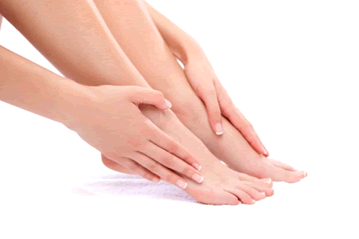 Diabetic patients should take care in treating their feet and should visit the podiatrist yearly. It’s essential that diabetic patients inspect their feet daily for any injuries, as diabetes can reduce blood flow to the feet, leading to neuropathy, the loss of sensation. Neuropathy can be damaging if patients do not check their feet daily. Neuropathy can be tested in patients through checking feelings of touch, temperature, pain, or any other sensation. As soon as neuropathy is diagnosed, patients should check their feet often, keep them clean and wear proper footwear to protect them from injury.
Diabetic patients should take care in treating their feet and should visit the podiatrist yearly. It’s essential that diabetic patients inspect their feet daily for any injuries, as diabetes can reduce blood flow to the feet, leading to neuropathy, the loss of sensation. Neuropathy can be damaging if patients do not check their feet daily. Neuropathy can be tested in patients through checking feelings of touch, temperature, pain, or any other sensation. As soon as neuropathy is diagnosed, patients should check their feet often, keep them clean and wear proper footwear to protect them from injury.
Diabetic foot care is important in preventing foot ailments such as ulcers. If you are seeking treatment, visit Dr. Nicholas Megdanis from Greater Queens Podiatry PLLC. Our doctor will assess your injury and provide you with quality treatment.
Diabetic Foot Care
Diabetes affects millions of people every year. Diabetes can damage blood vessels in many parts of the body, including the feet. Because of this, taking care of your feet is essential if you have diabetes, and having a podiatrist help monitor your foot health is highly recommended.
The Importance of Caring for Your Feet
· Routinely inspect your feet for bruises or sores.
· Wear socks that fit your feet comfortably.
· Wear comfortable shoes that provide adequate support.
Patients with diabetes should have their doctor monitor their blood levels because blood sugar levels play such a huge role in diabetic care. Monitoring these levels on a regular basis is highly advised.
It is always best to inform your healthcare professional of any concerns you may have regarding your feet, especially for diabetic patients. Early treatment and routine foot examinations are keys to maintaining proper health, especially because severe complications can arise if proper treatment is not applied.
If you have any questions, please feel free to contact our office located in Bayside, New York. We offer the newest diagnostic and treatment technologies for all your foot and ankle needs.
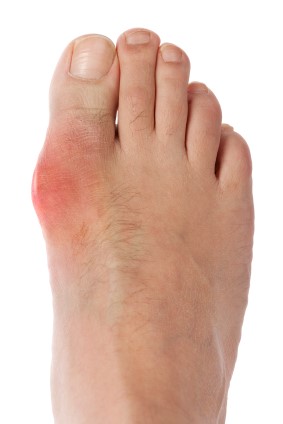 Also known as the “disease of kings,” gout can be a very debilitating condition. A form of arthritis, gout is caused by an excess production of uric acid in the body, which can lead to painful swelling in the joints. However, there are many different treatment options for gout, and that includes controlling what you consume. Avoid shellfish, red meat, excessive alcohol, and high-fructose foods. Gout occurs more often in older age groups, and is linked to obesity, high blood pressure, high cholesterol, and diabetes. To treat gout, have your uric acid levels monitored and managed often.
Also known as the “disease of kings,” gout can be a very debilitating condition. A form of arthritis, gout is caused by an excess production of uric acid in the body, which can lead to painful swelling in the joints. However, there are many different treatment options for gout, and that includes controlling what you consume. Avoid shellfish, red meat, excessive alcohol, and high-fructose foods. Gout occurs more often in older age groups, and is linked to obesity, high blood pressure, high cholesterol, and diabetes. To treat gout, have your uric acid levels monitored and managed often.
Gout is a foot condition that requires certain treatment and care. If you are seeking treatment, visit Dr. Nicholas Megdanis from Greater Queens Podiatry PLLC. Our doctor will assess your injury and provide you with quality treatment.
What is Gout?
Gout is a type of arthritis caused by a buildup of uric acid in the bloodstream. It often develops in the foot, especially the big toe area, although it can manifest in other parts of the body as well. Gout can make walking and standing very painful and is especially common in diabetics and the obese.
People typically get gout because of a poor diet. Genetic predisposition is also a factor. The children of parents who have had gout frequently have a chance of developing it themselves.
Gout can easily be identified by redness and inflammation of the big toe and the surrounding areas of the foot. Other symptoms include extreme fatigue, joint pain, and running high fevers. Sometimes corticosteroid drugs can be prescribed to treat gout, but the best way to combat this disease is to get more exercise and eat a better diet.
If you have any questions, please feel free to contact our office located in Bayside, New York. We offer the newest diagnostic and treatment technologies for all your foot and ankle needs.
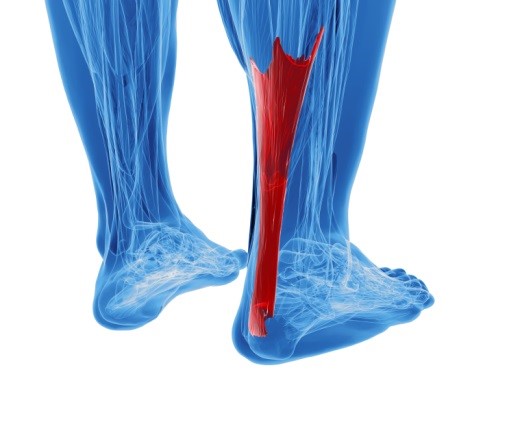 There can be several reasons for why you may be experiencing foot discomfort. Stuff.co.nz has suggestions about 8 possible causes. Make sure you’re stretching to strengthen your muscles, which can help with preventing foot pain. If you have pain in your hip, knee, or back, that can lead to too much weight on the feet, this can result in foot pain. Similarly, if you’re always on your feet, the burden of the constant weight can cause foot pain. Avoid cutting toenails in the wrong way, as they can lead to ingrown toenails. If you have flat feet, diabetes, gained weight, or recently participated in intense physical activity, these may be the reasons why your feet are hurting.
There can be several reasons for why you may be experiencing foot discomfort. Stuff.co.nz has suggestions about 8 possible causes. Make sure you’re stretching to strengthen your muscles, which can help with preventing foot pain. If you have pain in your hip, knee, or back, that can lead to too much weight on the feet, this can result in foot pain. Similarly, if you’re always on your feet, the burden of the constant weight can cause foot pain. Avoid cutting toenails in the wrong way, as they can lead to ingrown toenails. If you have flat feet, diabetes, gained weight, or recently participated in intense physical activity, these may be the reasons why your feet are hurting.
Anyone can wind up suffering from heel pain. If you are seeking treatment, visit Dr. Nicholas Megdanis from Greater Queens Podiatry, PLLC. Our doctor will assess your injury and provide you with quality treatment.
Causes of Heel Pain
● Heel pain is often associated with plantar fasciitis. The plantar fascia is a band of tissues that extends along the bottom of the foot. A rip or tear in this ligament can cause inflammation of the tissue.
● Achilles tendonitis is another cause of heel pain. Inflammation of the Achilles tendon will cause pain from fractures and muscle tearing. Lack of flexibility is also another symptom.
● Heel spurs are another cause of pain. When the tissues of the plantar fascia undergo a great deal of stress, it can lead to ligament separation from the heel bone, causing heel spurs.
Why Might Heel Pain Occur?
- Wearing ill-fitting shoes
- Wearing non-supportive shoes
- Weight change
- Excessive running
Treatments
Heel pain should be treated as soon as possible for immediate results. Keeping your feet in a stress free environment will help. If you suffer from Achilles tendonitis or plantar fasciitis, applying ice will reduce the swelling. Stretching before an exercise like running will help the muscles. Using all these tips will help make heel pain a thing of the past.
With the advancements in technology and greater knowledge of how muscles and joints work, physical therapists can turn things around dramatically.
If you have any questions, please feel free to contact our office located in Bayside, New York. We offer the newest diagnostic and treatment technologies for all your foot and ankle needs.
Heel pain is a stressful condition that affects day to day activities. Running and walking both causes stress on the heel because the heel is the part of the foot that hits the ground first. This means that the heel is taking on your entire weight. Diagnosis and treatments for heel pain can be easily found through your podiatrist.
One of the main causes of heel pain is a condition known as plantar fasciitis. The plantar fascia is a band of tissue that extends along the bottom of the foot, from the toe to the bottom of the heel. A rip or tear in this ligament can cause inflammation of these tissues, resulting in heel pain. People who do not wear proper fitting shoes are often at risk of developing problems such as plantar fasciitis. Unnecessary stress from ill-fitting shoes, weight change, excessive running, and wearing non-supportive shoes on hard surfaces are all causes of plantar fasciitis.
Achilles tendonitis is another cause of heel pain. Similar to plantar fasciitis, inflammation of the Achilles tendon will cause heel pain due to stress fractures and muscle tearing. A lack of flexibility of the ankle and heel is an indicator of Achilles tendonitis. If left untreated, this condition can lead to plantar fasciitis and cause even more pain on your heel.
A third cause of heel pain is a heel spur. A heel spur occurs when the tissues of the plantar fascia undergo a great deal of stress, leading to a separation of the ligament from the heel bone entirely. This results in a pointed fragment of bone on the ball of the foot, known as a heel spur.
Treatments for heel pain are easy and effective as long as problems are addressed quickly. The most common solution is simply taking stress off the feet, particularly off of the heel. This will ease the pain and allow the tendons and ligaments to relax. In the case of both plantar fasciitis and Achilles tendonitis, icing will reduce swelling of any part of the foot and anti-inflammatory medication is highly recommended. Properly fitting your shoes and wearing heel pads or comfort insoles will also reduce the risk of developing heel pain. Stretching before and after exercises such as running will help the foot muscles prepare for stress and lower the chances of inflammatory pain. In extreme cases, relieving heel pain might require surgery. Always make sure to discuss these symptoms and treatment options with your podiatrist to keep yourself active and pain free.
 New Balance, a shoemaker based in Boston, is set to develop a 3D printed running shoe. This new shoe is expected to be cost-effective and represent new breakthroughs in the development of running shoes. These shoes will be created with the focus of printing custom scans of patients’ feet, then creating a midsole with the measurements. This new shoe can offer benefits for patients who need inexpensive shoes that are comfortable and durable. The project involved collaborations with running and biomechanics experts in plastics engineering, generative design, and material development.
New Balance, a shoemaker based in Boston, is set to develop a 3D printed running shoe. This new shoe is expected to be cost-effective and represent new breakthroughs in the development of running shoes. These shoes will be created with the focus of printing custom scans of patients’ feet, then creating a midsole with the measurements. This new shoe can offer benefits for patients who need inexpensive shoes that are comfortable and durable. The project involved collaborations with running and biomechanics experts in plastics engineering, generative design, and material development.
Finding a proper fitting shoe is important in reducing injuries and preventing foot problems. If you are seeking treatment, visit Dr. Nicholas Megdanis from Greater Queens Podiatry PLLC. Our doctor will assess your injury and provide you with quality treatment.
Proper Shoe Fitting
A common concern when it comes to foot health, having properly fitted shoes can help prevent injuries to the foot. Out feet affect our posture and gait, which in turn affects the biomechanics and overall bodily structure. With 33 joints, 26 bones, and over 100 ligaments, the potential for serious injury is much greater than one realizes. Although the feet cease growth in adulthood, they still change shape as they mature. Here are some factors to consider when it comes to investing in proper fitting shoes:
● Be sure the shoes fit correctly right away
● Ensure the ball of your foot fits comfortably in the widest portion of the shoes
● Even though they may look fashionable, improper fitting shoes can either create adverse conditions or exacerbate existing ones you may already have
● Walk along a carpeted surface to ensure the shoes comfortably fit during normal activity
Keeping in mind how shoes fit the biomechanics of your body, proper fitting shoes is vitally important. Fortunately, it is not difficult to acquire footwear that fits correctly. Be sure to wear shoes that support the overall structure of your body. Do your feet a favor and invest in several pairs of well-fitted shoes today.
If you have any questions, please feel free to contact our office located in Bayside, New York. We offer the newest diagnostic and treatment technologies for all your foot and ankle needs.
Proper shoe fitting is one of the most common concerns people have when it comes to the health of their feet. To some this may not seem like a major issue, but the reality is that improperly fitted shoes account for a tremendous amount of injuries to the foot. Because our feet, our posture, and our gait directly affect the bio-mechanics and the overall structure of our entire body, pains and discomforts felt elsewhere within the body can frequently be attributed to improperly fitted footwear. Here are a few factors to consider, which will help you select the proper footwear when shopping.
Do not purchase shoes with the expectation that they will stretch to accommodate the size of your feet. You are looking for shoes that fit correctly right away. If the shoes you purchase are too large and are slipping in the area of the heel while you walk, do not purchase them. Do not look favorably upon shoes that slip with the intention of wearing thicker socks to compensate for the slippage. Make certain that in the widest portion of the shoes, the ball of your foot, fits comfortably in the shoe.
It may be difficult to focus on these things with all the distractions of shopping, or tempting to ignore them because you badly want an uncomfortable shoe. However, if you cannot wear shoes because they hurt too much to use, your money and time will be wasted. When you get your new shoes home, put them on and walk around on a carpeted surface to see ensure your shoe's fit comfortably with normal activity.
With 33 joints, 26 bones, and over 100 ligaments, the potential for damage to the sensitive components within the foot are greater than many people realize. Finding a properly fitting shoe is the single most important factor you can do to help prevent injury and maintain optimal foot health. Adults tend to forget the fact that our feet continue to change as we grow older. So, even though they may no longer experience growth spurts associated with youth, their feet still change shape as they mature.
If you already have problems with your feet, wearing improperly fitted shoes can potentially exacerbate those problems. Fortunately, it does not require a tremendous amount of effort to find shoes that fit correctly. When shopping for shoes, keep in mind that improperly fitted shoes can not only cause a whole host of disorders and problems to occur within the feet themselves—they can affect the entire bio-mechanical structure of the body. Your posture and your stride are based on your feet, so your footwear can have a tremendous impact on the legs, back, and rest of your body. Finding the proper shoe fitting is essential to keep your feet and body healthly.
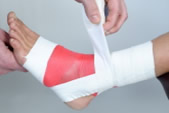 Algerian striker Baghdad Bounedjah broke his ankle after the first 18 minutes during the game against the Orlando Pirates in the Confederation Cup Final. He was replaced by Brazilian striker Acosta. Bounedjah underwent surgery but will be on leave for up to two months, according to the Tunisian club. Bounedjah was on loan from the Qatari side Al-Sadd for six months until the end of 2015. The club went on to beat the Orlando Pirates in a score of 2-1.
Algerian striker Baghdad Bounedjah broke his ankle after the first 18 minutes during the game against the Orlando Pirates in the Confederation Cup Final. He was replaced by Brazilian striker Acosta. Bounedjah underwent surgery but will be on leave for up to two months, according to the Tunisian club. Bounedjah was on loan from the Qatari side Al-Sadd for six months until the end of 2015. The club went on to beat the Orlando Pirates in a score of 2-1.
Broken ankles need immediate treatment. If you are seeking treatment, visit Dr. Nicholas Megdanis from Greater Queens Podiatry PLLC. Our doctor will assess your injury and provide you with quality treatment.
Broken Ankles
A broken ankle is experienced when a person fractures their tibia or fibula in the lower leg and ankle area. Both of these bones are attached at the bottom of the leg and combine to form what we know to be our ankle.
When a physician is referring to a break of the ankle, he or she is usually referring to a break in the area where the tibia and fibula are joined to create our ankle joint. Ankles are more prone to fractures because the ankle is an area that suffers a lot of pressure and stress. There are some obvious signs when a person experiences a fractured ankle, and the following symptoms may be present.
Symptoms of a Fractured Ankle
● Excessive pain when the area is touched or when any pressure is placed on the ankle
● Swelling around the area
● Bruising of the area
● Area appears to be deformed
If you suspect an ankle fracture, it is recommended to seek treatment as soon as possible. The sooner you have your podiatrist diagnose the fracture, the quicker you’ll be on the way towards recovery.
If you have any questions, please feel free to contact our office located in Bayside, New York. We offer the newest diagnostic and treatment technologies for all your foot and ankle needs.
| Bayside Office 4401 Francis Lewis Blvd Suite L3B Bayside, NY 11361 Phone: (718) 229-0222 Fax: (718) 717-0275 | Monday: 9:30am - 7pm |
E-mail us with any questions